As I mentioned in my review of the LEGO Bonsai Tree, I am thrilled to see LEGO releasing sets for adults that function as home (or office) decor. The sets look beautiful around the house, and the therapeutic value of building with bricks is high. Although these aren’t the first sets to function solely as a decorative item (in the “home decor” category there are brick mosaics that look like paintings, Star Wars helmet “sculptures,” etc.), they are the first I’ve seen that replicate something else you might commonly see around a home, unrelated to a fandom.
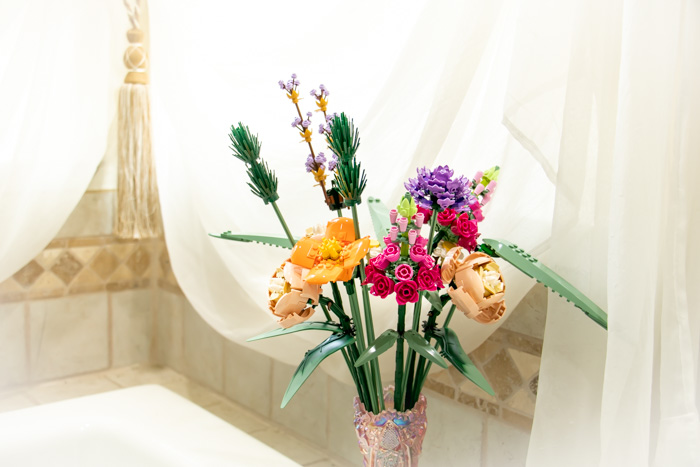
Flower assembly
The first thing I wondered about this set when looking at the box was, “How big are these flowers, exactly? How long are the stems?”

My next question was, “Does the set include a vase?” No, there is no vase in this build. In the end, this is a good thing. At the set’s price-point ($49.99 USD in the LEGO Store), including a vase would have driven up the cost and made it less feasible. Also, when it comes to home decor, I believe most people would prefer using their own vase to matches their home and aesthetic sensibilities.
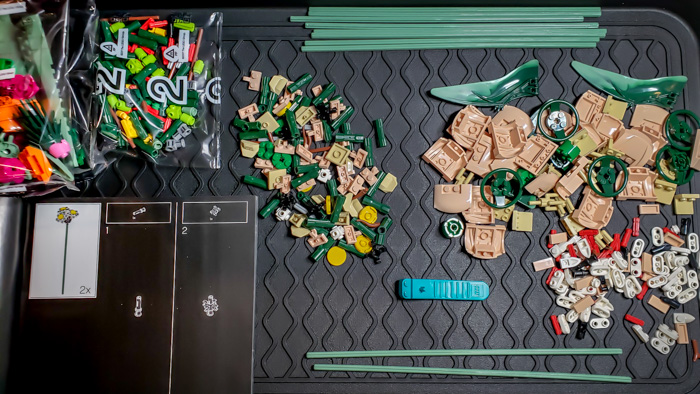
The building process was actually quite easy and relaxing. I was concerned that such intricate designs might be complicated, but the build was way easier than either the LEGO Ideas Treehouse or the Eight Studs Bricklink set in my previous reviews (I’m not talking size but the complexity of putting elements together). The building instructions were clear and the flowers each had patterns that repeated for each petal or part, and the parts came together in simple and sturdy ways.
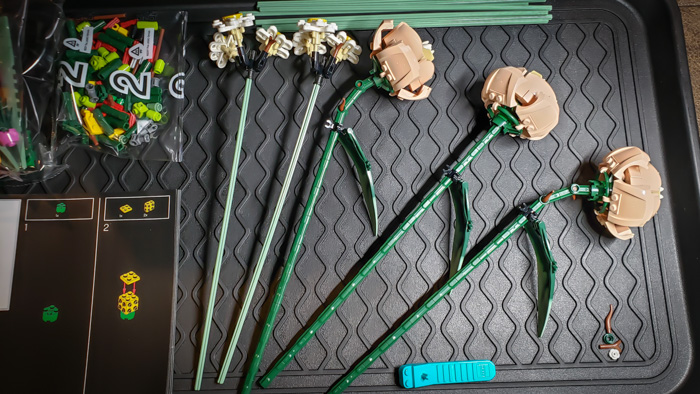
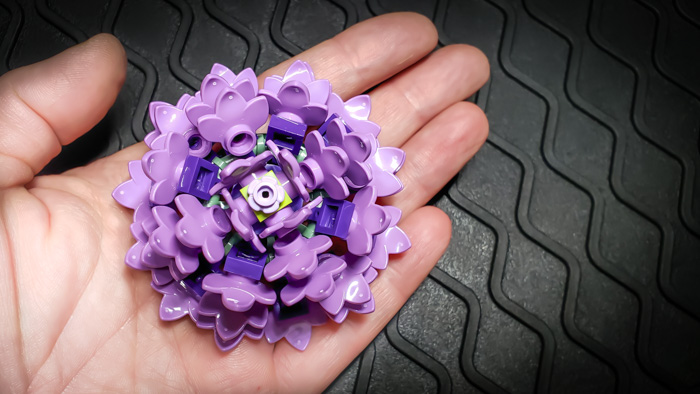
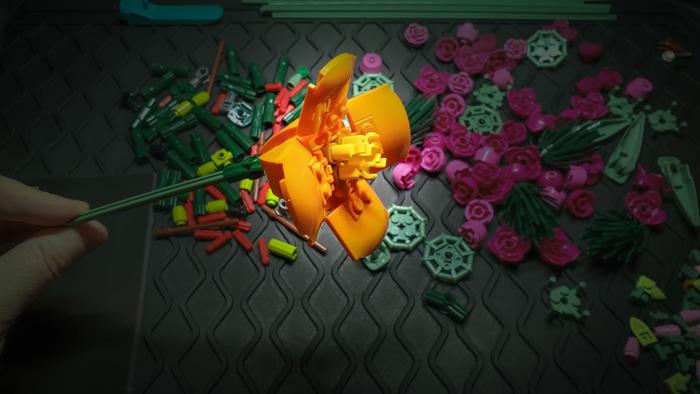
Plants from plants
The flowers themselves have a delicate beauty, but are surprisingly resilient. I especially liked seeing the California poppy represented, since it’s my home state’s flower. The set includes:
- 3 roses
- 2 snapdragons
- 2 daisy bunches with three blossoms each
- 1 aster
- 1 poppy
- 1 lavender
- 3 larger leaves
- 2 clumps of greenery
As the LEGO Group is always proud to mention, they make these bricks using plant-based plastic from sustainably sourced sugarcane. The LEGO Group’s desire is to leave the planet better than they found it, to give the next generation a sustainable future. To this end, their mission is to produce all of their bricks from sustainable sources by 2030. An admirable goal!
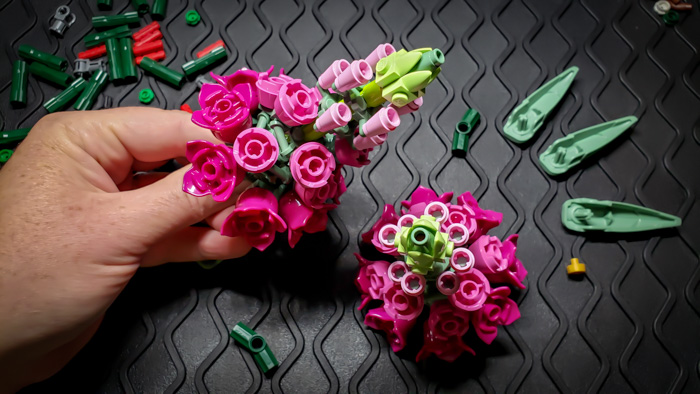
My customizations
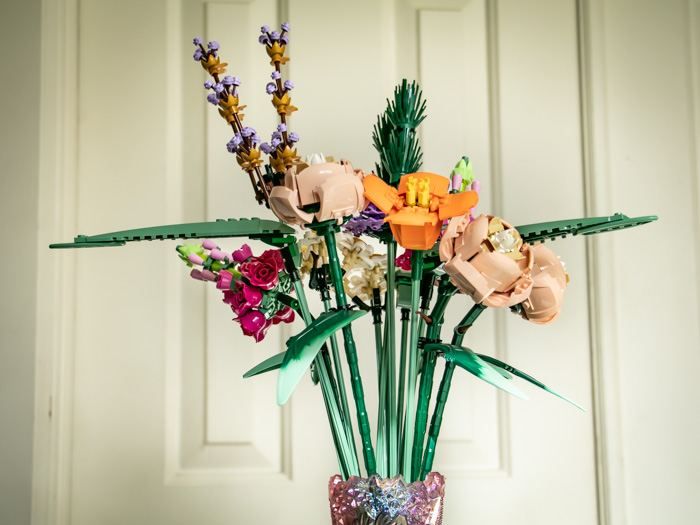
There are three large leaves or plant blades in the bouquet. I’m not sure which exact plant they represent, but they fill out the bouquet with a non-blossomed greenery. As you can see in this picture (above), these elements end up at the same height as—or higher than—the flowers themselves. I found this undesirable, visually.
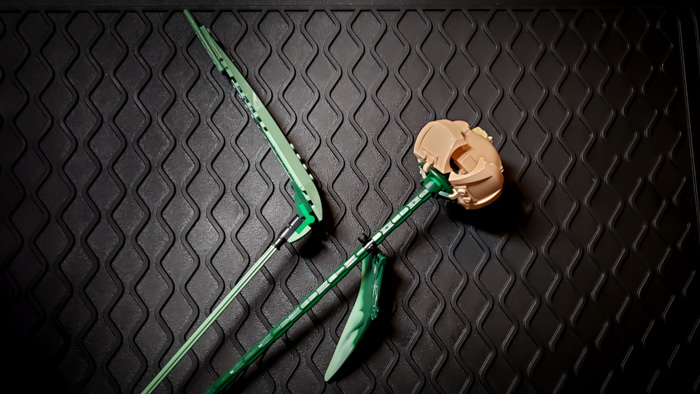
These blades have a near-90-degree angle, which makes them create awkward horizontal lines out on the same plane as the blossoms, detracting from the blossoms themselves. I wanted them below the height of the flowers, and to make them droop a little more to create an arc instead of a 90-degree angle.
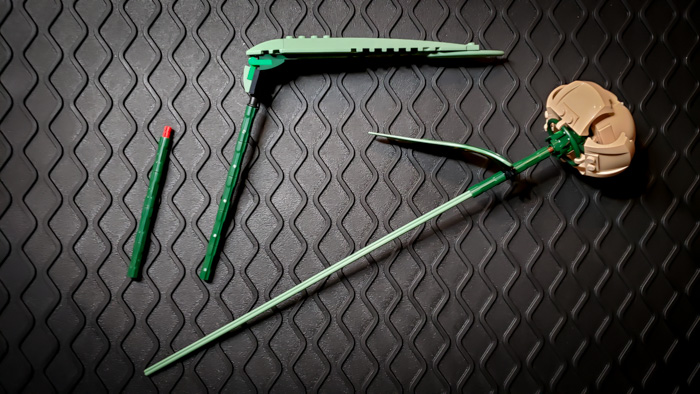
My first simple fix was to swap the stem of the blade with the stem of some of the roses (above), bringing the rose higher and the green leaf blade lower.
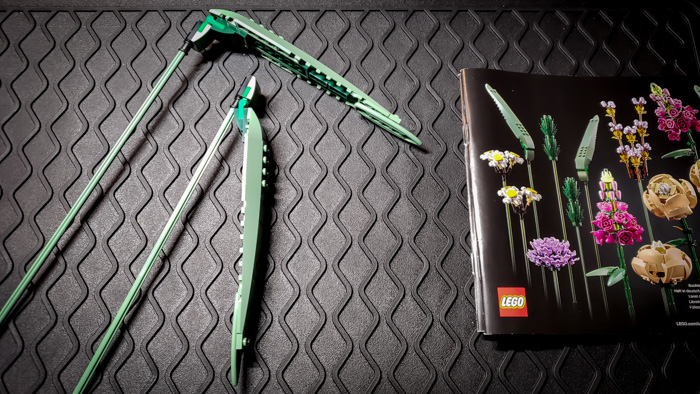
My next idea was to make the leaf blade droop more instead of sticking out horizontally. I’m no LEGO engineer, so I worked in my own simple way. I share it here to offer one idea, but I’m sure others could come up with better ideas!
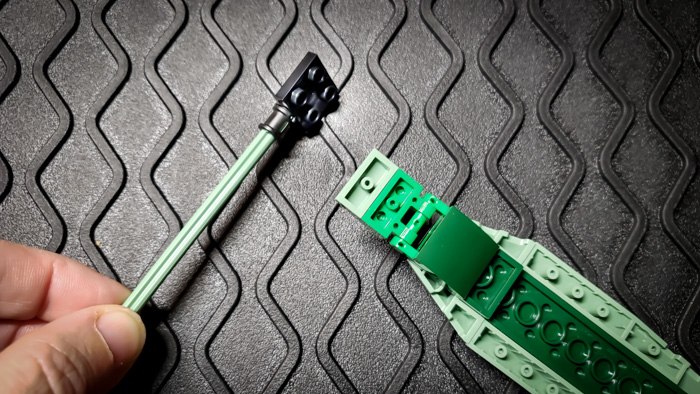
Remove the leaf blade from its stem. 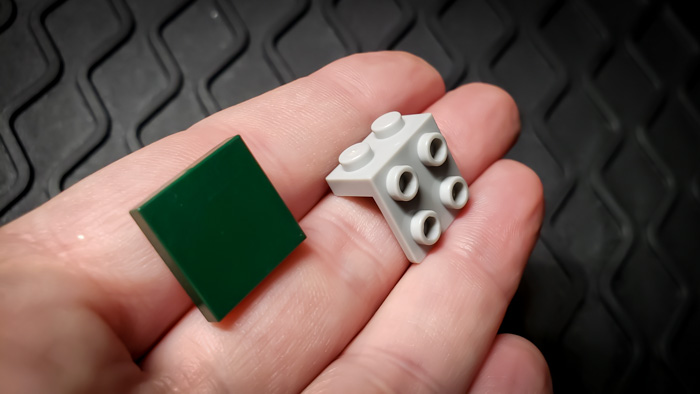
I found these additional pieces in my own LEGO collection (not included in the Bouquet set). 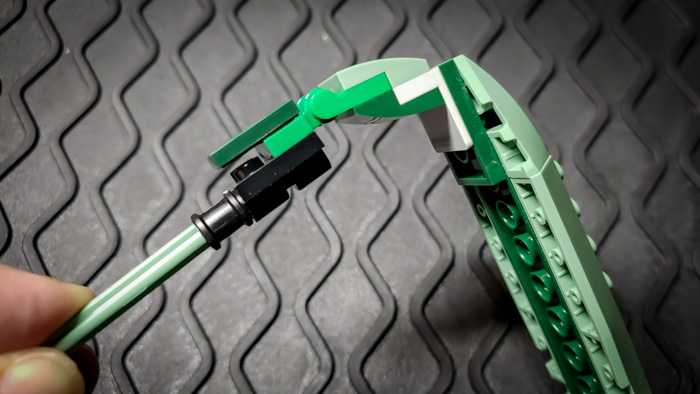
Adding my two pieces, I put this option together. 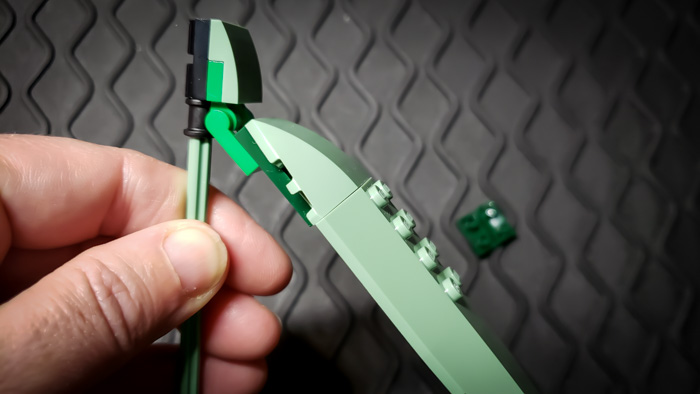
Another idea was just moving around the existing pieces until the angle of the leaf blade was different.
Flower arranging
The overall resilience of the flowers during the flower arrangement process is impressive. The snapdragons have a very small connection to their stem for such heavy blossoms (see below). But even they stayed in one piece while I moved things around to create the arrangement I wanted.
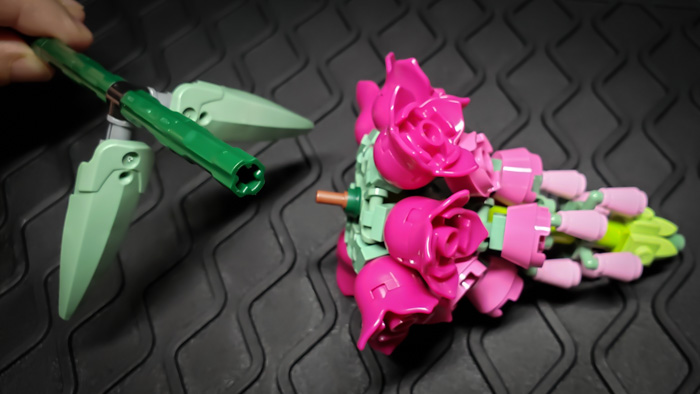
Problem: The weight of the flower blossoms tend to pull them to the side if the vase has an opening much larger than the combined width of the stems. The result is that if you want to arrange the bouquet with a particular flower in the center, it is difficult to make that flower stay. It will tend to lean to the side, falling out of the center.
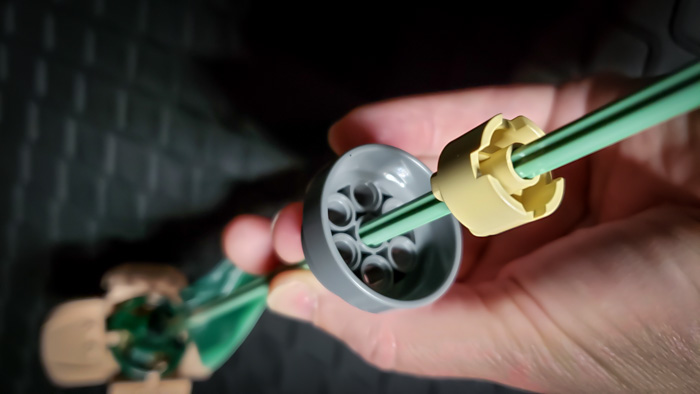
Solution: Place something around the stem of your centerpiece flower (above) that props the stem against the other stems and prevents the weight of the blossom from pulling the flower out of the center. The surrounding stems then actually help hold the flower in place (below).
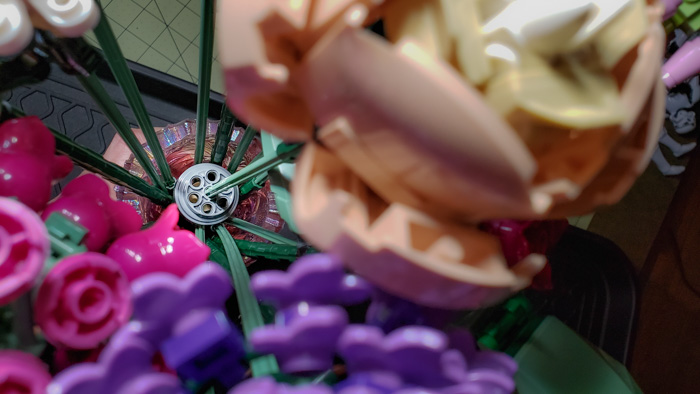
It’s a totally personal aside, but I did enjoy adding a different color of brick separator to my collection. This sort of teal or aquamarine is one of my favorite colors!
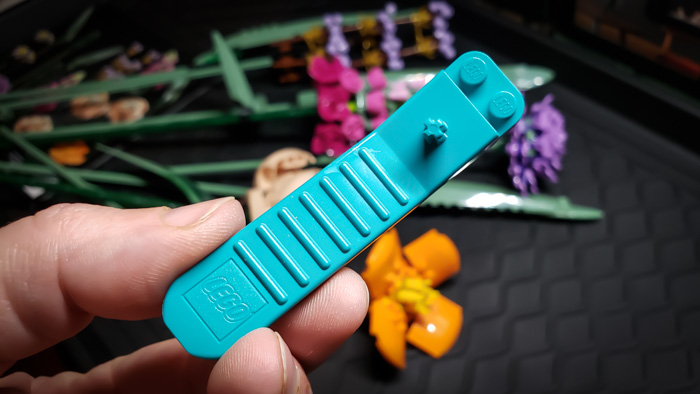
Conclusion
The Flower Bouquet is a lovely addition to any home, especially for anyone who likes creativity, unique decor, and who has fond memories of LEGO toys. I recommend a set like this as a gift for occasions like birthdays, anniversaries, weddings, house-warming and proposals. It’s also good for anyone coming out of the hospital who needs a relaxing activity and something beautiful to look at while they recover. The bouquet works in a variety of vase shapes and sizes.
Sadly, I do not see much in the way of toy photography options with this set. I’m sure creative toy photographers with more motivation than I could find ways to use the flowers with their toys. But for myself, about the only time I’d think this set works for toy photos (as built) is during Jantmanuary, when Ant-Man may be running around one’s home anyway.
That said, I love having a gift idea I can use to share my LEGO hobby with my friends and family. I’m also inspired and excited about adding MOC flowers to the bouquet. Of course, building flowers requires a number of the same specific parts in the same colors. If you want to create your own, consider sites like bricklink.com for acquiring multiples of the same bricks. Good job, LEGO Group! You keep putting out new ideas that enrich my home and inspire creativity.
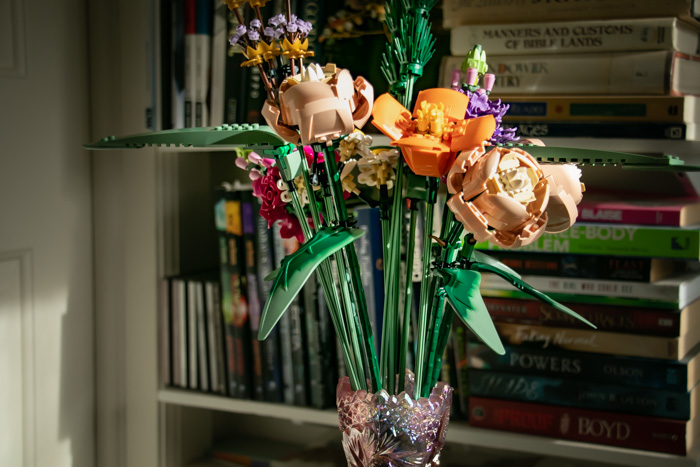
What about you?
Is there someone in your life who you think would enjoy this set? Do you have some ideas for how to use a set like this for toy photography? Share in the comments below!


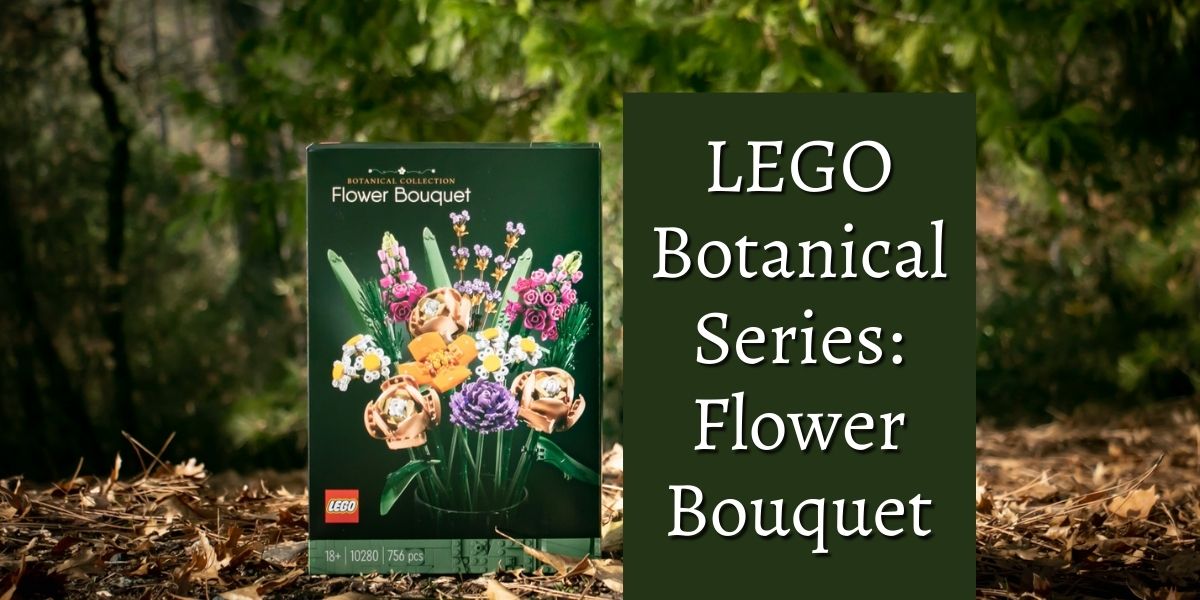
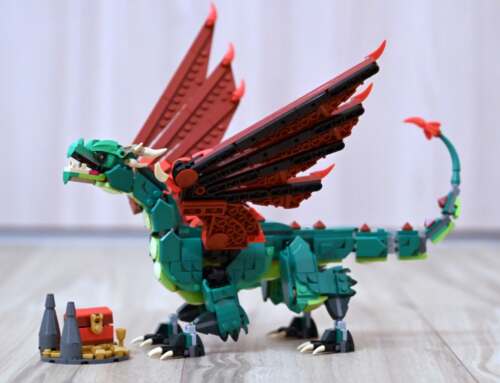



Thanks for the review, Teddi! The bouquet wasn’t even on my radar and might be a fun project to build instead of another building.
I really enjoyed it, Mary — both the build and the finished product. I originally thought I’d give it away after photographing and reviewing it. But it’s truly a beautiful and unique addition to my home. And LEGO flowers never die!
What vase did you use in the photos? I’m currently searching for one for my flower bouquet and I think yours fits it really well (from what I can see)!
I switched vases later, so I’m not sure where that one went. Currently, I have a 10″ tall vase with decorative pebbles inside to hold the flowers at the desired height. It’s about 3 1/2″ in diameter. I believe the one in the photo was shorter, more like 6″ or 8″ tall and a smaller diameter. My best recommendation for a source of vases is the hobby/craft stores Michael’s or JoAnn, but you can probably find one anywhere (Target, WalMart, etc).